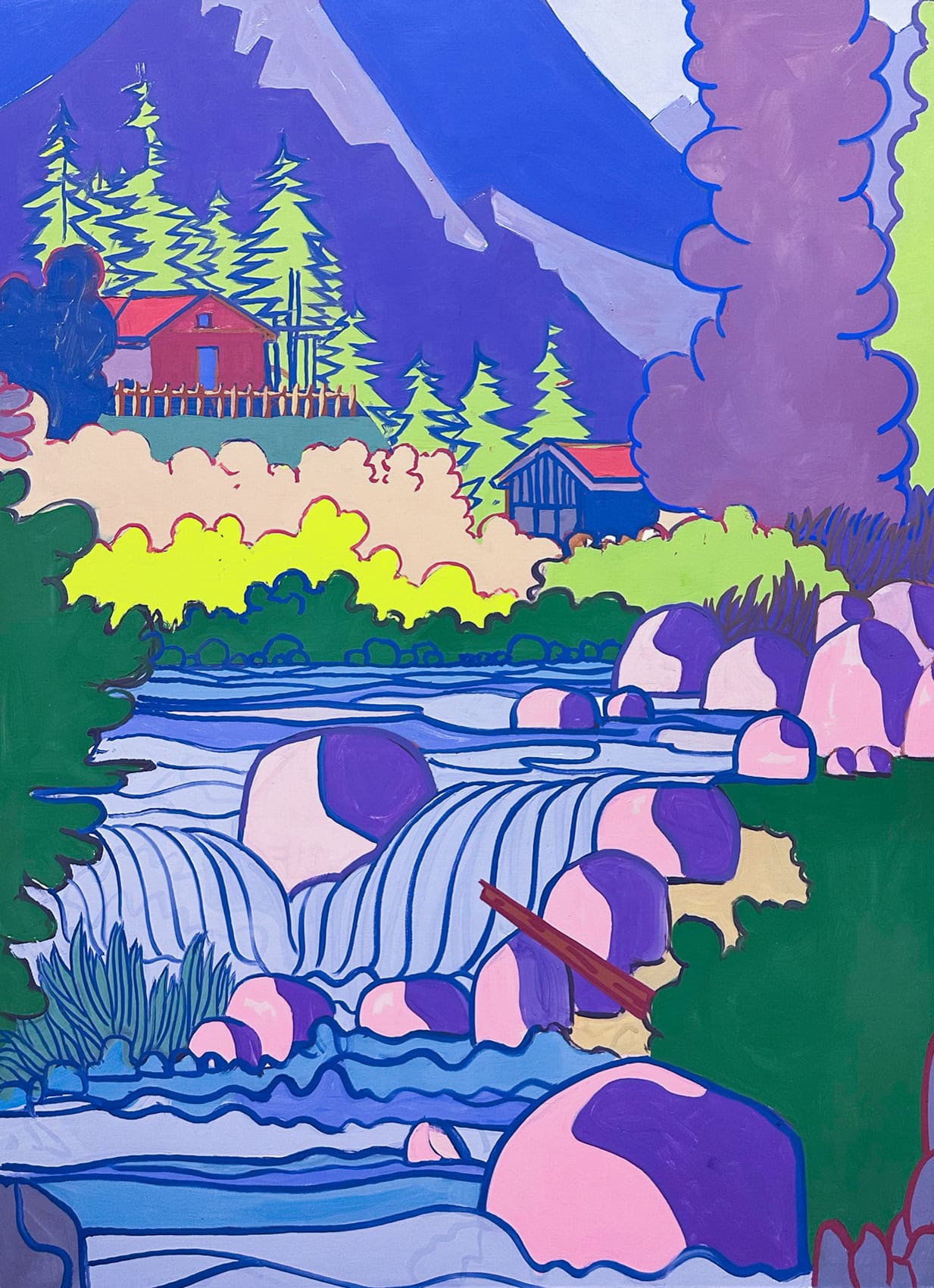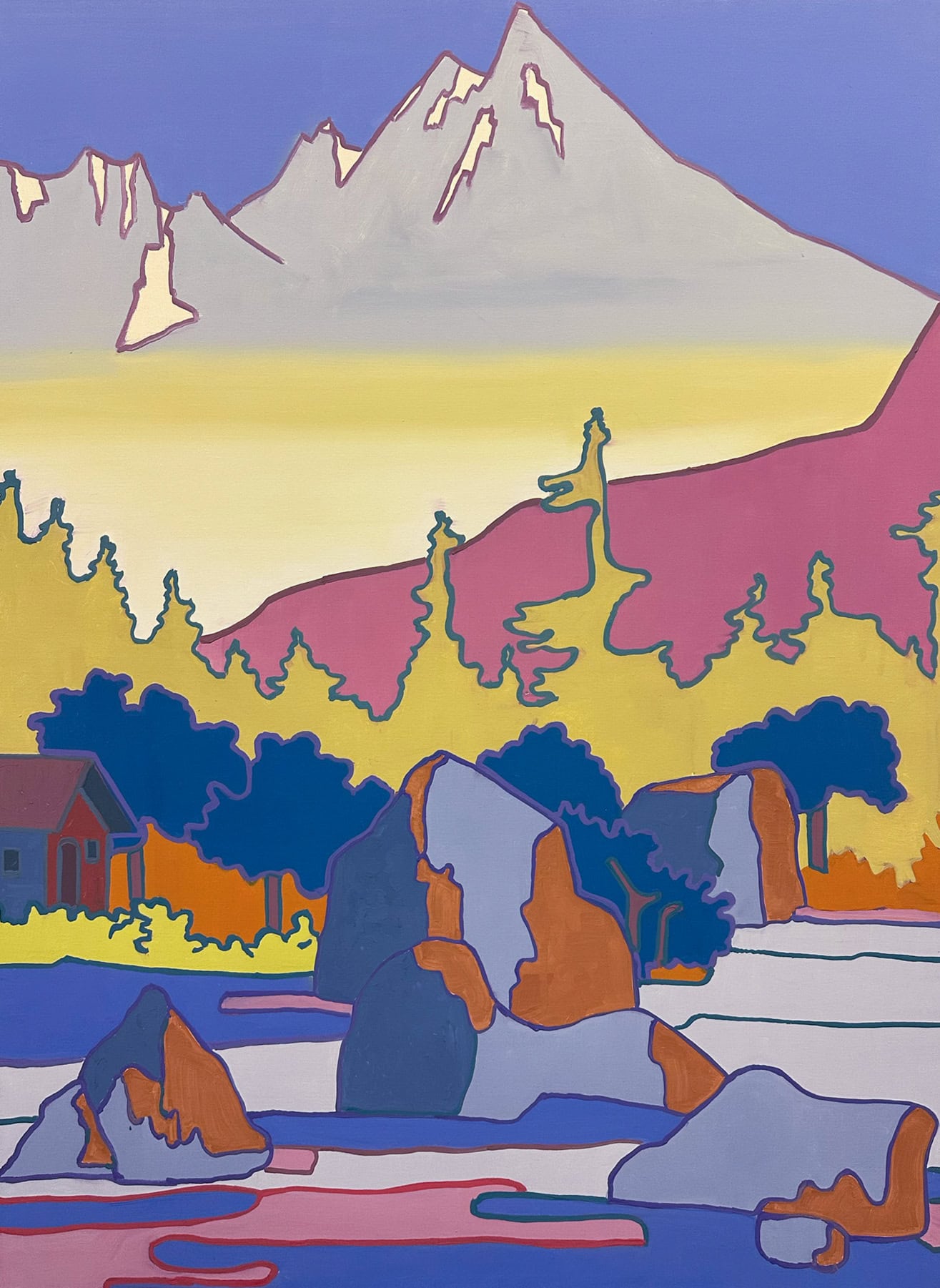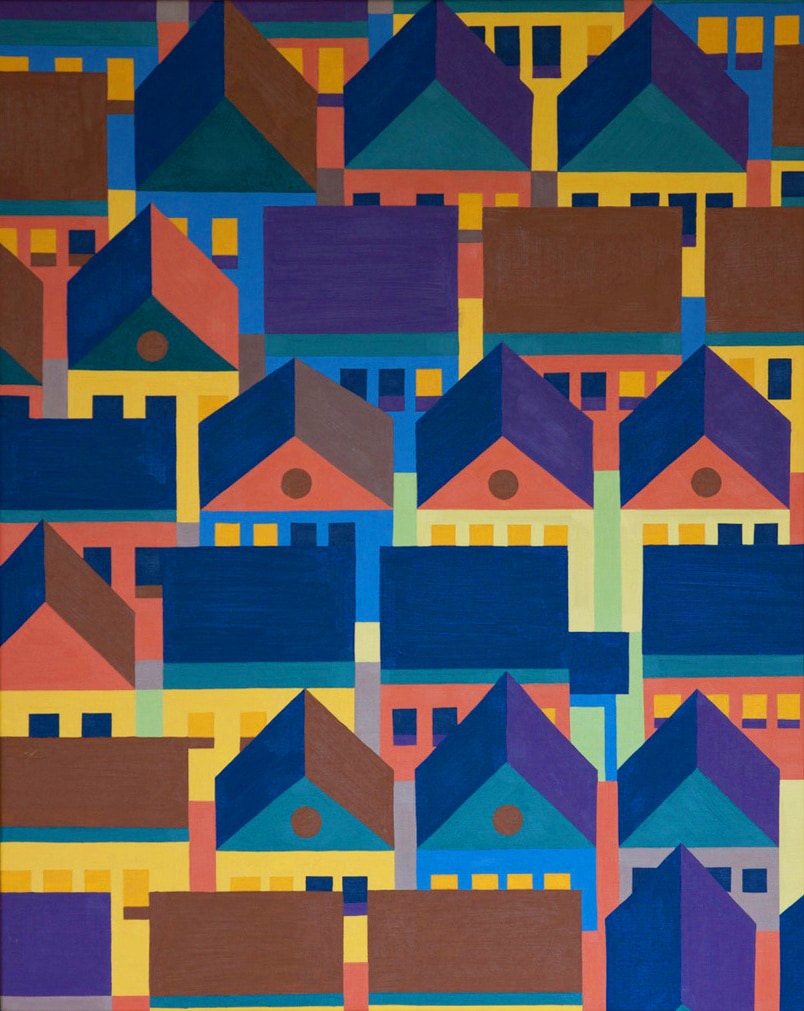Hubert Schmalix
Hubert Schmalix is one of the most prominent Austrian artists and is known for his luminescent landscapes as well as nudes, flowers and cityscapes.
While he started in Vienna in the 80s as a “Junger Wilde” (“young wild one”) with an expressive-gestic style, he developed over time towards a contemplative, reduced form vocabulary. His landscapes are idealisations with recurring motifs such as mountains, stones and trees.
Selected works


















Hubert Schmalix
Biography
Hubert Schmalix (*1952 Graz, ✝ 2025 Los Angeles) was part of the group of artists that became known under the label “Junge Wilde” in the 1980s, among them Herbert Brandl, Siegfried Anzinger and Erwin Bohatsch. For Schmalix, who studied, amongst others, under Max Melcher at the Academy of Fine Arts Vienna, figuration has always been a crucial element of his work, but his focus lies less on the image content than on colour, form and surface.
Over the decades, and due to his move to the Philippines and Los Angeles, a transition from an expressive-gestic towards a contemplative, reduced form vocabulary is discernible. Besides numerous female nudes, his luminescent landscapes and Californian rows of houses captured from a bird’s-eye view in contrasting colour fields are the most impressive examples of his mature work. His motifs merge set pieces of bucolic scenes such as mountains, alpine cabins, waterfalls, gushing streams and driftwood into painted idylls. It is the permanent search for a locus amoenus which, while it doesn’t function as an existential perspective, is indeed a metaphor for the right life within the wrong one.
“I’m not a painter who paints the light. I create light through colour. This is what defines painting,” says Hubert Schmalix about his art. “One could also say I produce a light that does not exist in reality.”
Hubert Schmalix lived and worked in Los Angeles and Vienna. In 2022 he received the Austrian Cross of Honour for Science and Art.
Obituary
As announced by his family, the painter Hubert Schmalix died at the age of 73 at his home in Los Angeles on 23 March 2025 (local time) after a long and serious illness.
His artistic commitment was intense and focussed until the end. The catalogue for his last solo exhibition Tremor at the Schlossmuseum in Linz was published just last week. However, Hubert Schmalix created his very last work for the music pavilion of STEIERMARK SCHAU 2025, which is currently on display at Heldenplatz in Vienna and will be presented in front of Eggenberg Palace in Graz from 26 April. Last year, Hubert Schmalix was awarded the Styrian Decoration of Honour for Science, Research and Art 1st Class and in 2022 the Austrian Decoration of Honour for Science and Art.
Hubert Schmalix was one of the main protagonists of the ‘New Painting’ movement of the 1980s. The ‘Young Wild Ones’ of the time took a poetic, narrative, eruptive and subjective approach to their art. Experiencing the future from the past in the present – a paradox that could also be described as conceptual. The image production of the time can be described as the last analogue furore. Schmalix, who studied at the Academy of Fine Arts in Vienna from 1971 to 1976 and already had a solo exhibition at the Neue Galerie Graz in 1978, was also very successful internationally at a very early stage: he took part in the Aperto 80 exhibition at the Venice Biennale in 1980 and the Sydney Biennale in 1984. Extensive solo presentations also took place regularly in the major Austrian art institutions and galleries. His influence on younger generations has been enormous – he was a visiting professor at UCLA, Los Angeles, from 1992 to 2005 and a professor at the Academy of Fine Arts in Vienna from 1999 to 2006. His works can be found in all the country’s major museums as well as in numerous private collections in Austria and internationally.
‘I am not a painter who paints light. I create light through colour. That’s what makes a painter.’ (Hubert Schmalix)
His imagery has always inspired a large audience. His pictorial inventions fundamentally reassure us. They tell of idylls, of conditions that seem familiar and desirable to us. The uncanny relaxedness and coolness, which also give rise to uncertainty, or at least ambiguity, are still the strength of Hubert Schmalix’s paintings today. Since he moved to California for good in 1987, the atmosphere in his paintings has become even brighter, more spacious and determined by the light of the colours. They do not show an Arcadia, although one would like to wander through it. They are imaginations – familiar, past and also broken dreams. They follow the general visual culture, but also that of art history. The Mediterranean European Hubert Schmalix encounters a seemingly ideal substrate in California – pulsating in the glistening sunlight on the Pacific Ocean, it seems that nothing can hide there. His images are clear, straightforward and yet mysterious. We encounter a relaxed emptiness as well as enigmatic content that creeps up on us almost inconspicuously. ‘Where do I belong?’, ‘Who am I?’, the few protagonists in the pictures seem to ask themselves. Has the artist ever asked himself this?
The scenery has become increasingly darker in the images of recent years. People who have fallen, are writhing on the ground and are downcast, are quarrelling with their god. The old white man, whose laws have become obsolete, whom his followers are fleeing and who himself has just been driven out of his paradise, suddenly appears as the artist’s terrifying alter ego.
The latest works by Hubert Schmalix also have a prognostic effect. They slip completely into the symbolic nature of digital culture – emojis. We encounter empty faces, oversized hands that warn and attract at the same time – gestures and glances.
An obituary by Günther Holler-Schuster, Universalmuseum Joanneum, Graz